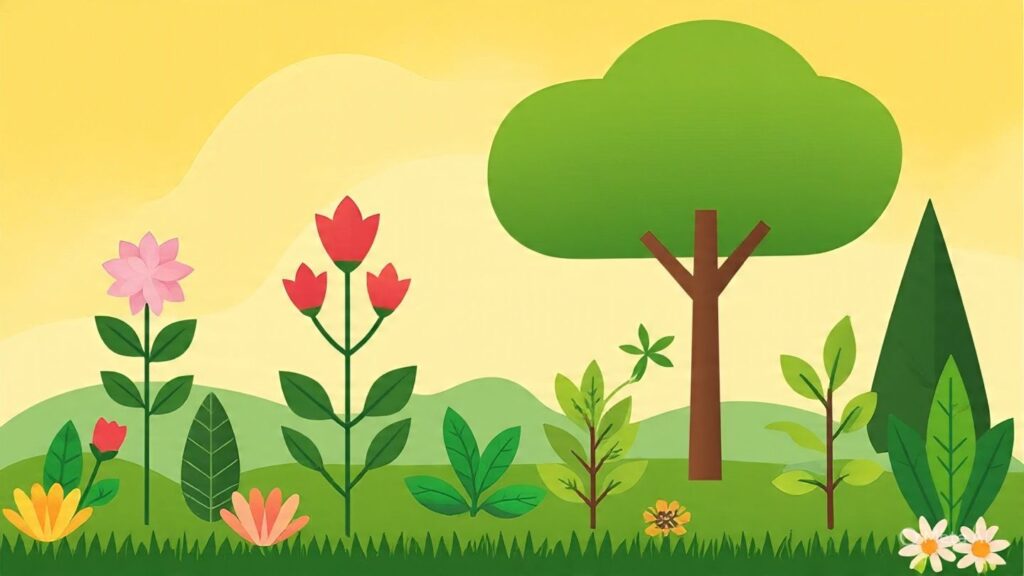Different Types of Plants for Kids
Plants are living things that grow in the soil and need sunlight, water, and air to live. They come in many shapes and sizes and play a big role in our environment. Let’s explore the different types of plants you can find around you!
1. Flowering Plants
These are plants that produce flowers. Examples include rose, sunflower, and marigold. Flowers are often colorful and attract bees and butterflies, which help in pollination.
2. Non-Flowering Plants
These plants do not produce flowers but still grow and survive like mosses, ferns, and algae. They often grow in damp or shady areas and spread using spores instead of seeds.
3. Trees
Trees are tall, strong plants with thick trunks and branches. They live for many years. Common trees include mango, banyan, and coconut. Trees give us fruits, wood, shade, and clean air.
4. Shrubs
Shrubs are shorter than trees and have multiple stems. They are bushy and grow near the ground. Examples include rose bush, hibiscus, and jasmine.
5. Herbs
Herbs are small, soft plants used for cooking and medicine. They include mint, coriander, and basil. They usually grow quickly and are easy to care for at home.
6. Climbers
Climbers are plants that need support to grow upwards. They wrap around sticks, walls, or fences. Examples are money plant, grapevine, and pea plant.
7. Creepers
These plants grow along the ground. Their stems are weak and cannot support the plant to stand up. Examples include watermelon, pumpkin, and cucumber.
8. Aquatic Plants
These plants live in water bodies like ponds and lakes. Lotus and water lilies are flowering aquatic plants. Others like duckweed float on the surface.
9. Desert Plants
Plants like cactus and aloe vera grow in dry places. They store water in their leaves and stems to survive hot and dry weather. Their leaves are often thick and spiny.
10. Grass
Grasses are soft, green plants that grow in lawns, parks, and fields. They help prevent soil erosion and provide food for many animals.
Plants are important for life on Earth. They give us food, oxygen, shelter, and beauty. Learning about plants helps us care for the environment and become more responsible towards nature.
